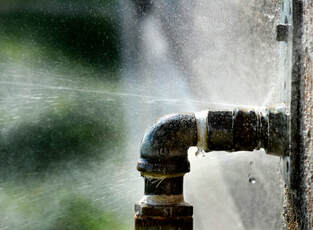Overview To Water Leak Discovery In The House
Overview To Water Leak Discovery In The House
Blog Article
This article listed below relating to Top leak detection hacks is quite engaging. Check it out yourself and decide what you think about it.

Early discovery of leaking water lines can minimize a prospective disaster. Some small water leaks might not be noticeable.
1. Take A Look At the Water Meter
Every house has a water meter. Inspecting it is a surefire manner in which helps you find leakages. For starters, switch off all the water sources. Make sure no person will purge, make use of the faucet, shower, run the washing equipment or dishwasher. From there, go to the meter as well as watch if it will certainly change. Because nobody is utilizing it, there need to be no movements. If it moves, that suggests a fast-moving leakage. Furthermore, if you detect no changes, wait an hour or two and check back again. This means you might have a slow-moving leakage that might even be underground.
2. Examine Water Usage
If you identify abrupt adjustments, despite your intake being the same, it suggests that you have leaks in your plumbing system. An abrupt spike in your expense shows a fast-moving leakage.
A stable boost every month, even with the exact same routines, reveals you have a sluggish leakage that's likewise slowly intensifying. Call a plumber to completely inspect your property, specifically if you really feel a cozy area on your floor with piping below.
3. Do a Food Coloring Examination
When it involves water usage, 30% comes from toilets. Test to see if they are running effectively. Decrease specks of food shade in the storage tank and also wait 10 mins. There's a leakage in between the storage tank and also bowl if the shade somehow infiltrates your bowl throughout that time without flushing.
4. Asses Exterior Lines
Do not forget to examine your outdoor water lines as well. Must water seep out of the link, you have a loose rubber gasket. One small leakage can throw away heaps of water as well as increase your water expense.
5. Inspect and Analyze the Situation
Property owners ought to make it a habit to examine under the sink counters and also inside cupboards for any kind of bad odor or mold development. These two warnings indicate a leakage so punctual interest is called for. Doing routine examinations, even bi-annually, can conserve you from a significant problem.
Examine for discolorations and also deteriorating as most devices and pipelines have a life expectancy. If you think dripping water lines in your plumbing system, do not wait for it to escalate.
Early discovery of leaking water lines can reduce a possible catastrophe. Some tiny water leakages may not be visible. Checking it is a proven way that helps you discover leaks. One little leakage can throw away tons of water and surge your water costs.
If you presume leaking water lines in your plumbing system, do not wait for it to rise.
WARNING SIGNS OF WATER LEAKAGE BEHIND THE WALL
PERSISTENT MUSTY ODORS
As water slowly drips from a leaky pipe inside the wall, flooring and sheetrock stay damp and develop an odor similar to wet cardboard. It generates a musty smell that can help you find hidden leaks.
MOLD IN UNUSUAL AREAS
Mold usually grows in wet areas like kitchens, baths and laundry rooms. If you spot the stuff on walls or baseboards in other rooms of the house, it’s a good indicator of undetected water leaks.
STAINS THAT GROW
When mold thrives around a leaky pipe, it sometimes takes hold on the inside surface of the affected wall. A growing stain on otherwise clean sheetrock is often your sign of a hidden plumbing problem.
PEELING OR BUBBLING WALLPAPER / PAINT
This clue is easy to miss in rooms that don’t get much use. When you see wallpaper separating along seams or paint bubbling or flaking off the wall, blame sheetrock that stays wet because of an undetected leak.
BUCKLED CEILINGS AND STAINED FLOORS
If ceilings or floors in bathrooms, kitchens or laundry areas develop structural problems, don’t rule out constant damp inside the walls. Wet sheetrock can affect adjacent framing, flooring and ceilings.
https://www.servicemasterbyzaba.com/blog/how-to-detect-water-leakage-in-walls/

As a passionate reader about Top leak detection hacks, I think sharing that post was sensible. Are you aware of another person who is intrigued by the subject? Feel free to promote it. Many thanks for your time. Come back soon.
Report this page